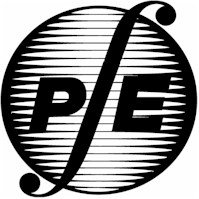Idaho Society of Professional Engineers
Friday Update - 03/25/05
WELCOME NEW MEMBERS!
Jeff Snyder/Driggs
Louis Simonet/Idaho Falls
Jeffrey Waddoups/Pocatello
UPCOMING EVENTS:
● April 14 - 16, 2005 -
ISPE Annual Meeting, Pocatello, Idaho
● July 7 - 9, 2005 - NSPE
2005 Annual Convention, Chicago, Illinois
DON'T FORGET TO REGISTER
FOR THE 2005 ISPE ANNUAL MEETING!
Building A Better Future
With the introduction of the Clean Water Act final amendments in 1972 we have
seen sweeping changes in the quality of our water resources. All across the Gem
State, communities were given funds to complete upgrades to their water and
wastewater infrastructure. Over the course of time these projects slowly reach
the end of their usable life. So this year, join us as we look into the future
and examine some of the challenges and opportunities that Idaho’s engineers will
face in the upcoming years.
Registration forms, hotel information and a program outline are all available on
the ISPE web site,
or contact the ISPE office at ispe@rmci.net
 Learn
about the great accomplishments of your fellow members and let your peers know
of your achievements. Check out the
NSPE Member
Spotlight now!
Learn
about the great accomplishments of your fellow members and let your peers know
of your achievements. Check out the
NSPE Member
Spotlight now!

MATHCOUNTS PROBLEM OF THE WEEK
Can you solve this MATHCOUNTS problem? The answer will appear in next week's
edition of the Friday Update!
A "Toast" to the Arts
A group in London broke the world record for the largest mosaic made from toast.
By toasting bread to various degrees, the shades of brown were used to create
art in the Town Hall square. It was reported that 7000 slices of stale bread
were used, which came from 400 loaves. What was the average number of slices of
bread per loaf? Express your answer as a decimal to the nearest tenth.
--------------------------------------------------------------------------------
The artwork covered 700 square feet of the ground. Assuming each piece of toast
was a square and was the same exact size, how many inches were in the side
length of a piece of the toast? Express your answer as a decimal to the nearest
tenth.
--------------------------------------------------------------------------------
There were four-to-five people working on this mosaic from 7:30 a.m. until 5:05
p.m. that same evening. For this problem, let’s assume there were always five
people working. Each piece of toast was stuck to the ground with jam. On
average, how many seconds did it take to put each piece of toast in place?
Express your answer to the nearest whole number.
Answer to last week's MATHCOUNTS problem:
The formula for the volume of a cylinder is p ´ r2 ´ h. We know that for this
hat the radius is 2 and the height is 8, so the area is p ´ 32 ´ 8 = 226.2 cubic
inches. If the chocolates from one bag take up 20 cubic inches of space, Patrick
will need 226.2 ¸ 20 = 11.3, which means 12 whole bags of chocolates.
--------------------------------------------------------------------------------
Maureen currently has 0.40 ´ 8 = 3.2 cups of yellow paint and 0.60 ´ 8 = 4.8
cups of blue paint in her mixture. We know that she needs more yellow paint, so
she will eventually have 3.2 + x cups of yellow paint and 4.8 cups of blue
paint, and we want this to be a ratio of 3:2. So we can set up the proportion
(3.2 + x) / 4.8 = 3 / 2. If we find the cross-products, we get 6.4 + 2x = 14.4.
Subtracting 6.4 from both sides leads to 2x = 8 and x = 4. Therefore, Maureen
needs to add 4 cups of yellow paint to the current mixture to get Margaret’s
shade of green.
--------------------------------------------------------------------------------
If we’re keeping the two Es together, then we might as well just replace EE
with, let’s say, a P. So now we just need to figure out how many arrangements of
the letters G, R P and N exist. There are four letters, so there are 4! = 24
ways they can be arranged. A tree diagram may be helpful to visualize this, but
make sure it’s big enough for 24 branches!
If you want to see last week's problem again, click
http://www.mathcounts.org/webarticles/anmviewer.asp?a=628&z=104
Idaho Society of Professional Engineers
PO Box 170239
Boise, ID 83717-0239
208-426-0636
Fax: 208-426-0639
E-Mail: ispe@rmci.net
Web Site: www.Idahospe.org
 Idaho
Society of Professional Engineers
Idaho
Society of Professional Engineers